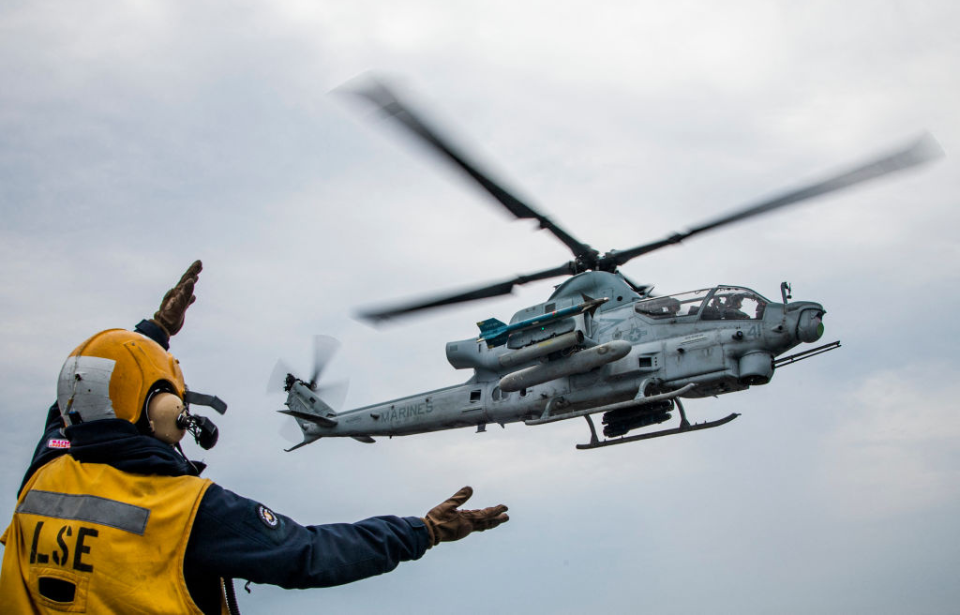When it comes to attack choppers, Bell Textron (formerly Bell Helicopter) is a major player in the North American market. The brains behind the famed UH-1 Iroquois and AH-1 Cobra, the company has been a staple of military operations for decades. One Bell helicopter that’s deserving of more attention is the AH-1Z Viper, an upgraded version of the AH-1.
Developed to meet the needs of the US Marine Corps
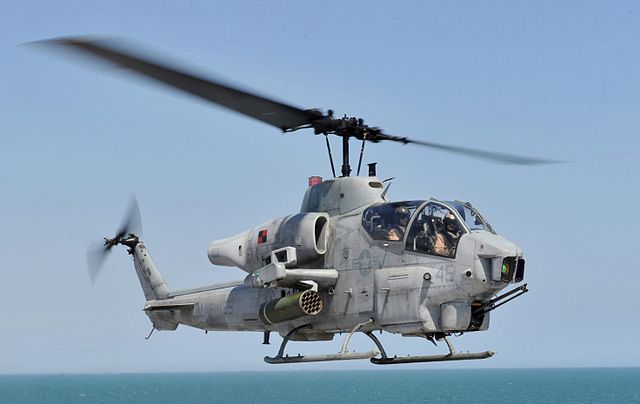
The AH-1Z Viper was developed to meet the ever-changing needs of the US Marine Corps. The service sought a more advanced and capable attack helicopter to replace its aging fleet of Bell AH-1W SuperCobras – with the continued emergence of modern threats and technological advancements, the chopper was becoming outdated – and thus the H-1 Upgrade Program was created, which not only saw the development of the AH-1Z, but upgrades given to the UH-1N Iroquois.
The primary goal with the AH-1Z was to create a helicopter that featured enhanced survivability, improved avionics and greater versatility. The Marine Corps required a platform that could perform a host of missions, including close-air support, anti-armor and aerial reconnaissance.
Developing the Bell AH-1Z Viper
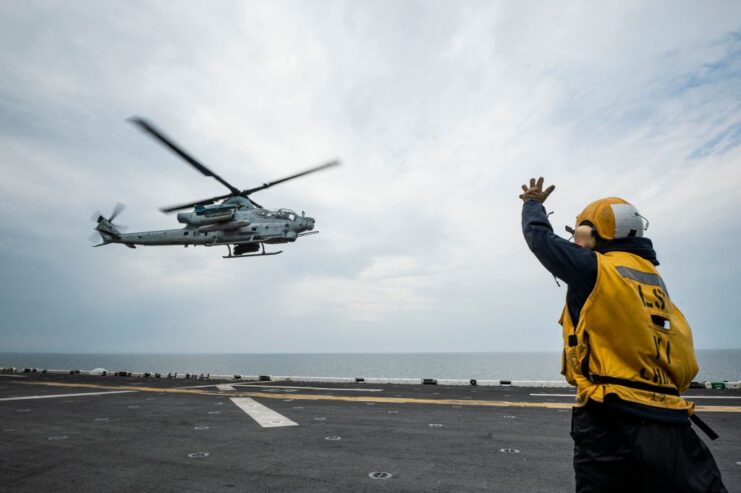
The development of the AH-1Z Viper began in the late 1990s, with Bell Helicopter collaborating closely with the US Marine Corps and others to ensure the new chopper met all requirements. The process involved extensive research and testing to integrate new technologies and systems into the existing AH-1W SuperCobra airframe.
The development phase saw several significant changes made, including the replacement of the two-blade rotor system with a four-blade, bearing-less one. This improved the chopper’s flight characteristics, giving it a much-needed increase in speed and payload capacity. It also reduced vibrations mid-flight. On top of this, the AH-1Z received advanced avionics, a more effective target sighting system and enhanced survivability features.
The helicopter underwent its first flight in December 2000. After rigorous testing, it entered low-rate production just under three years later.
Bell AH-1Z Viper specs
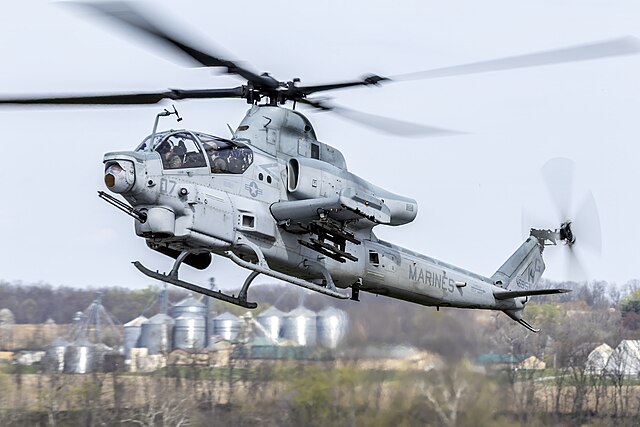
As aforementioned, the AH-1Z Viper features several upgrades that set it apart from its predecessors. It’s powered by two General Electric T700-GE-401C turboshaft engines, which allow it to reach a maximum speed of 222 knots and remain in flight up to 430 miles. The helicopter’s four-blade rotor system, made from composite materials, enhances its flight performance and durability.
In terms of armament, the AH-1Z is equipped with a 20 mm M197 three-barreled rotary cannon mounted in an A/A49E-7 turret. It can also carry a variety of weapons on its six hardpoints, including Hydra 70 rockets, AIM-9 Sidewinder air-to-air missiles and AGM-114 Hellfire air-to-surface missiles. Its avionics suite features the Lockheed Martin Target Sight System (TSS), for day and night targeting capabilities and improved situational awareness.
The AH-1Z has self-sealing fuel tanks, an energy-absorbing landing gear and a crashworthy airframe. It’s also equipped with countermeasure dispensers, radar warning receivers and missile warning systems to enhance its defensive capabilities.
Serving the US Marine Corps

The AH-1Z Viper has been a crucial asset for the US Marine Corps since it achieved combat readiness in 2010. It’s been deployed in various theaters, providing close-air support, armed escort and reconnaissance for ground forces, and it’s famous for being the only attack helicopter with the need to be deployed from both naval vessels at sea and land-based forward-operating bases.
The AH-1Z’s most notable deployments had been during Operation Inherent Resolve, where it’s played a key role in the fight against ISIS in Iraq and Syria; its ability to deliver precision strikes and provide real-time aerial reconnaissance continues to prove invaluable to coalition forces.
Do any other countries equip the Bell AH-1Z Viper?
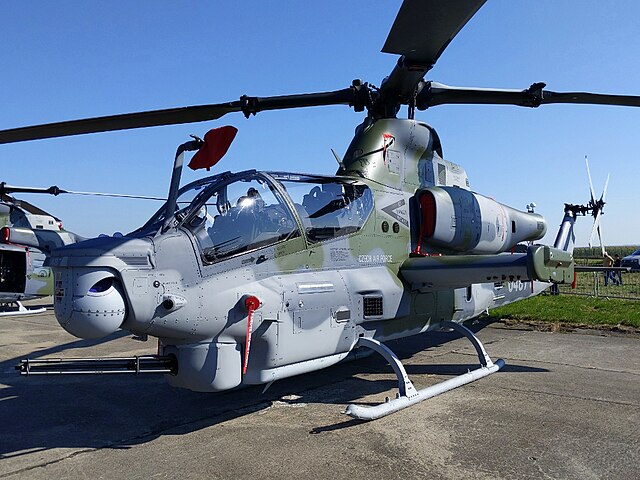
Several countries have incorporated the AH-1Z Viper into their military forces. The Royal Bahraini Air Force was the first export customer, ordering 12, and the Czech Air Force has also acquired the helicopter to replace its aging fleet of Cold War-era Mil Mi-24 gunships.
Other nations, including Nigeria and Slovakia, have placed orders for the AH-1Z. The former is slated to receive 12 units via a deal with the US Department of Defense that’s valued at $455 million.
What does the future hold for the Bell AH-1Z Viper?
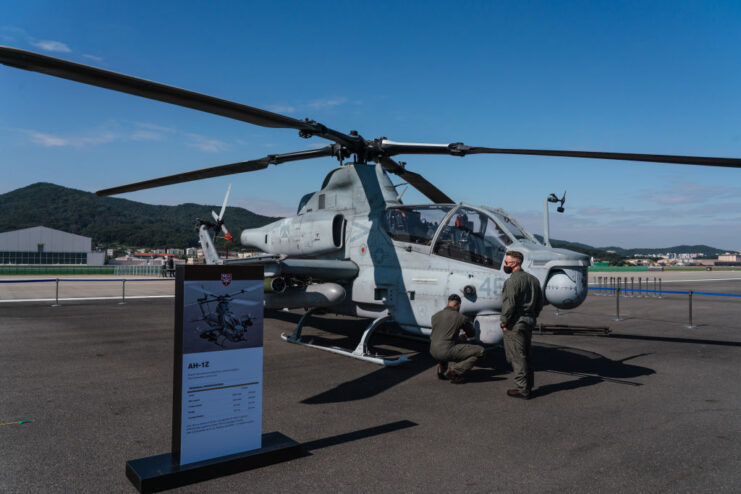
The future of the AH-1Z Viper looks promising, as it continues to be an asset to the US Marine Corps and militaries worldwide. The former plans to maintain and upgrade its fleet, to ensure it remains effective in future conflicts. Ongoing upgrades include the integration of the AGM-179A Joint Air-to-Ground Missile (JAGM) and the installation of Link 16 datalink systems.
More from us: The Most Iconic Cargo Aircraft in Military History
Want War History Online‘s content sent directly to your inbox? Sign up for our newsletter here!
Additionally, new and continued international orders indicate a growing interest in the AH-1Z’s capabilities. As more nations seek to modernize their military forces, the chopper is likely to see increased demand.
